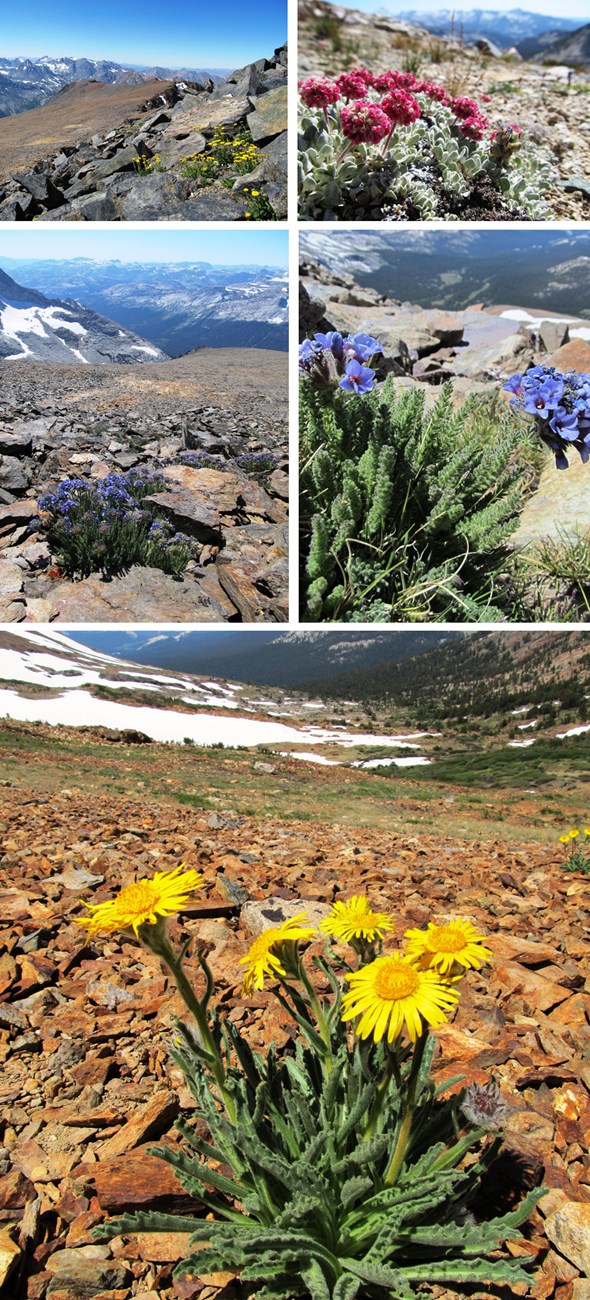|
After an absence of nearly 100 years, a herd of Sierra Nevada bighorn sheep now inhabit Yosemite National Park’s Cathedral Range. As the bighorns were translocated from nearby Inyo National Forest over a two-week period in spring, 2015, news media alerted a worldwide audience as the bighorns settled into their new home in the heart of the Yosemite wilderness. Each of the 12 adult bighorns wears a Global Positioning System (GPS) satellite collar that sends signals to wildlife biologists who carefully monitor their movements. Imagine the excitement as the first signals were received, and the wildlife biologists began to track the bighorns’ surefooted movements along the rocky beauty of the Cathedral Range. Learn about the behavior of these amazing animals with the interactive maps below. Lesson #1Your turn! You are a Yosemite National Park wildlife biologist in charge of monitoring S375, a 7-year old ewe, who was released into the Upper Merced Watershed on March 26, 2015. The topographical map plots S375’s locations every 12 hours from March 28, 2015 to May 17, 2015. This is a vitally important time period as S375 first begins to find her place in the new landscape. Use the time-slider or play button to animate S375’s GPS track and watch her movements as she explores. After studying her movements, you realize she spends a lot of time in steep terrain but she also makes a quick trip down and across the river canyon and climbs out at a very fast pace. As a trained biologist you must determine why she decided to leave the river, and climb all the way to the top of the steep cliff so quickly. Lesson #1 Hint and AnswerHint:Bighorns have excellent eye sight, in fact, they can see small objects a half mile away. Think about why they may have adapted such excellent vision? Is there certain terrain that allows them to put their excellent long-distance vision to good use? Answer:If your answer had something to do with avoiding predators, you are correct! Bighorns know better than to remain in river canyons where the range of their vision is limited. S375's instincts told her to not linger in the canyon and to regain the high ground very quickly. If she had to out-maneuver a predator, like a mountain lion, she could rely on her padded hooves and phenomenal strength and balance. Outracing predators across seemingly featureless, vertical cliffs comes easy for a bighorn, but only if the race begins on the steepest ground. Lesson #2Your turn! You are a Yosemite National Park wildlife biologist in charge of monitoring S375, a 7-year old ewe, who was released into the Upper Merced Watershed on March 26, 2015. The topographical map plots S375's locations every 12 hours from May 17, 2015 to July 5, 2015. Click the box next to "GPS tracks" to show recorded locations, then use the time-slider or play button to animate S375's GPS track and watch her movements as she explores.
After some careful observation it would seem that she is moving to higher elevations as spring turns to summer. What is happening up in the mountains at this time of year that would motivate such behavior? As the days grow longer and warmer how is the alpine landscape changing?
Lesson #2 Hint and AnswerHint: |
Last updated: October 1, 2024

